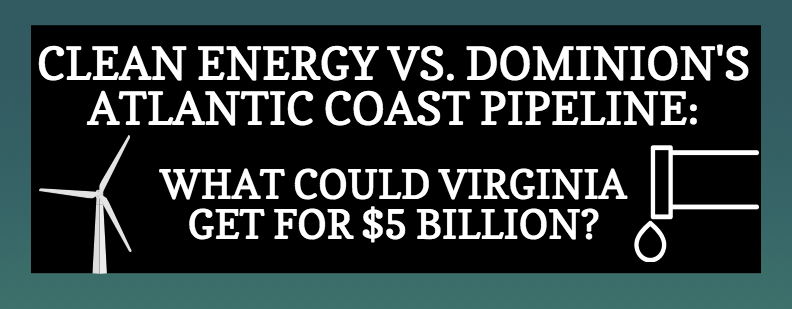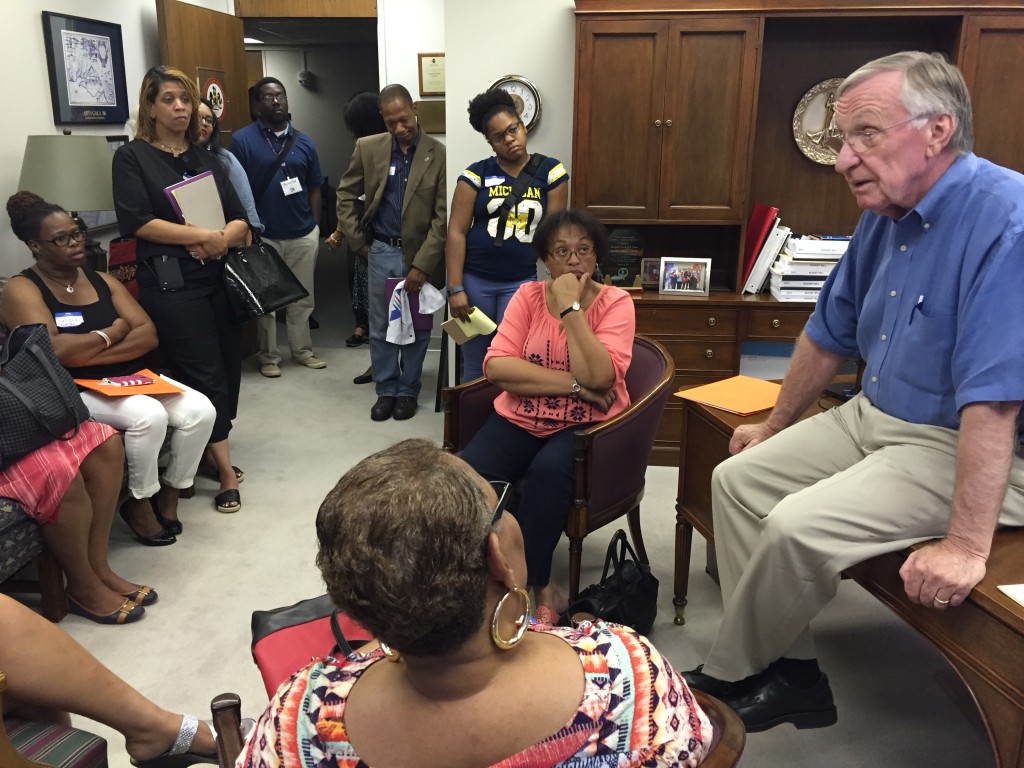
PANELS, NOT PIPELINES: VIRGINIA’S RENEWABLE FUTURE
The coalition of citizens, naturalists, biologists, scholars, families, landowners, and forest-enthusiasts fighting our region’s natural gas infrastructure know that the Atlantic Coast Pipeline (ACP) threatens the region as we know it. The ACP, if built, will pose an imminent risk to air quality, water quality, community and environmental integrity, as well as legal rights and constitutional due process. The ACP is slated to cross the George Washington National Forest, diminishing the widely documented value of contiguous forest land and directly putting human users and wildlife habitat at risk.
These matters are absolutely critical to the future of citizenship and public health. As we know, however, Dominion single-mindedly directs their energy to follow corporate financial reward. Thus, a crucial step in dismantling Dominion’s plans to construct the ACP is to prove that investment in renewable energy is not only a must for the future of the planet, but financially feasible as well.
CCAN, the Chesapeake Climate Action Network, released a stunning graphic (see end of post) this month to illustrate what would happen if the $5.1 billion it would take to build the proposed ACP were instead invested in clean renewable energy. Dominion, as well as their propaganda spin-off Energy Sure, have made various claims about the supposed necessity and benefits of the ACP, including fuel cost savings for consumers, “cleaner air,” and job creation across the region. Additionally, Dominion purports that natural gas facilitates a transition to renewable energy sources such as wind and solar. Throughout their promotional materials and social media platforms, the Dominion and Energy Sure campaigns have employed a misleading family-centric, business-minded approach that in actuality, speaks foremost to Dominion corporate profit.
Until now, Dominion has pushed the ACP using their seemingly winning numerical logic of job creation, increased tax revenue, and business relocation to states serviced by the ACP. While there might be some validity to these numbers proposed by Dominion, CCAN’s data refutes Dominion’s underlying premise that natural gas infrastructure is the means to reach maximum job and business growth. CCAN’s modeling shows that while the ACP would only bring 1,462 temporary construction jobs and 118 permanent jobs, a $5 billion investment in solar would bring 2,500 temporary jobs and 226 permanent. With an even higher return, a $5 billion investment in wind energy would bring 7,000 temporary jobs and 1,752 permanent jobs. The same $5 billion invested in wind energy would bring more permanent jobs than the ACP could even offer temporary workers.
Thanks to CCAN’s thorough research efforts, Dominion can no longer justify the ACP’s risks with the promise of jobs and business opportunities for Virginians. Dominion, you can balance corporate profit with corporate responsibility. Renewables unmistakably offer that future. As for Virginians, we’ll breathe easy, keep our lights on, and take in the majestic view of pipeline-free National Forests.
So here it is, CCAN’s comparison:


